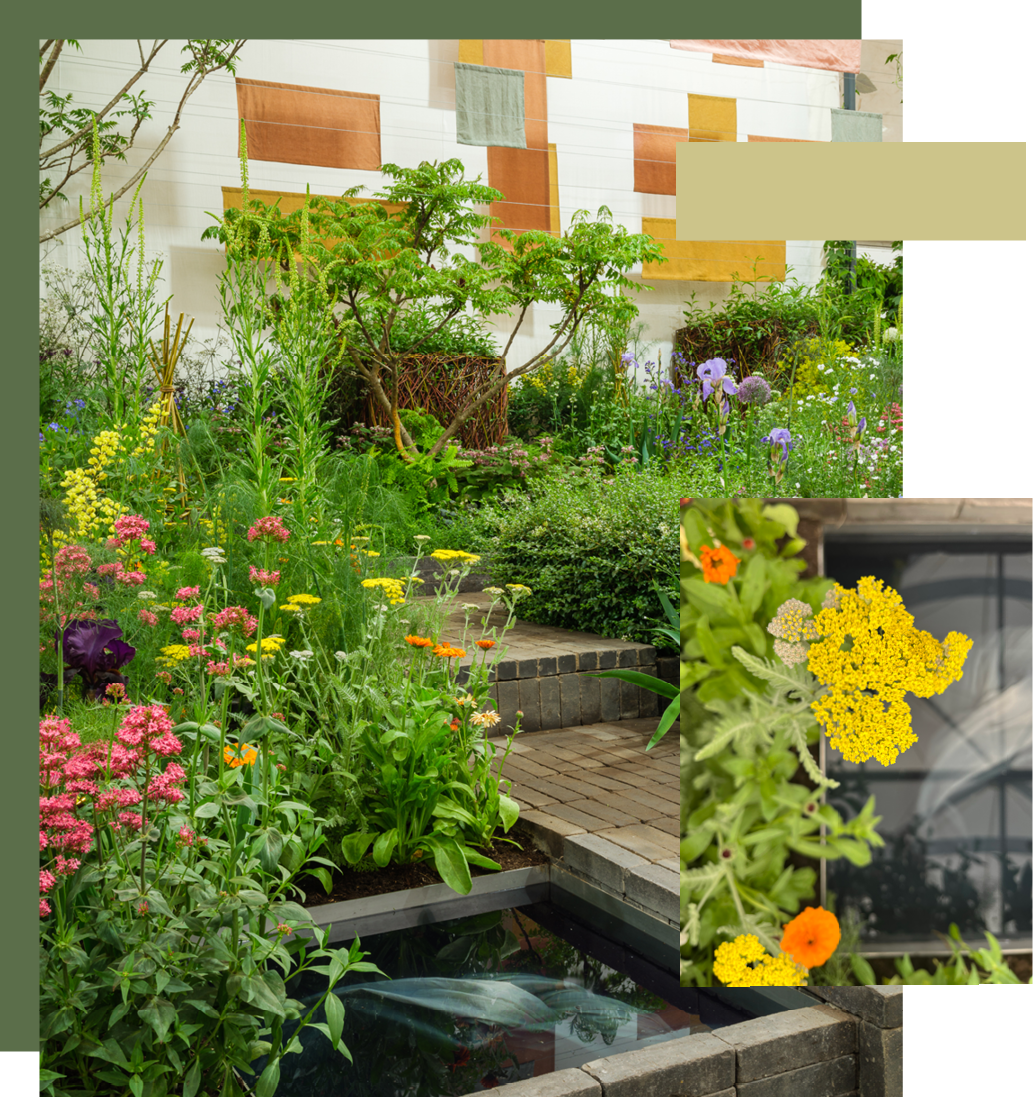
RHS Chelsea 2022
A Textile Garden for Fashion Revolution explored the relationship between plants and textiles and inspired visitors to ask #whatsinmyclothes?
Throughout history, plants have played a fundamental role in fashion - as dyes, fibres, floral motifs and in botanical folklore, connecting us to a place, a story or a culture. While trekking in Northern Vietnam, Lottie saw how families grew the plants to make their clothes alongside their vegetables and was fascinated by the close relationship between what they wore and what was growing in their gardens. However in our globalised world, this connection is rapidly being lost.A Textile Garden for Fashion Revolution provided a unique opportunity to showcase the creative possibilities and innovative thinking around how we can use the resources that are literally on our doorsteps to create more sustainable solutions. It re-established the connection between plants and textiles, revealed the beauty to be found in plant-based dyes and fibres, and sowed a seed of curiosity about what we wear.
The garden design imitated a textile, with planting in distinctive blocks of colour to create the impression of a woven fabric. Plants were supplied by UK nurseries and growers and were chosen for their use as fibres or textile dyes in commercial or craft use. The garden also featured a textile installation made entirely from plants by students of Headington School Oxford. Shallow reflective pools represented dye baths, with fabric or fibres soaking in natural dyes, and a series of paved seams led through the planting.
The garden attracted nationwide press coverage and was widely featured in gardening, lifestyle and environmental press.
The garden was made up entirely of plants that can be used as dye or fibre, to illustrate the creative possibilities of doing more with less.
Download full plant list here
The garden attracted nationwide press coverage and was widely featured in gardening, lifestyle and environmental press.
The garden was made up entirely of plants that can be used as dye or fibre, to illustrate the creative possibilities of doing more with less.
Download full plant list here


Sponsor : Project Giving Back
Charity : Fashion Revolution
Contractor : Garden Link
Plant Nursey : Kelways
Photography : Dave Watts & Britt Willoughby Dyer
Charity : Fashion Revolution
Contractor : Garden Link
Plant Nursey : Kelways
Photography : Dave Watts & Britt Willoughby Dyer







